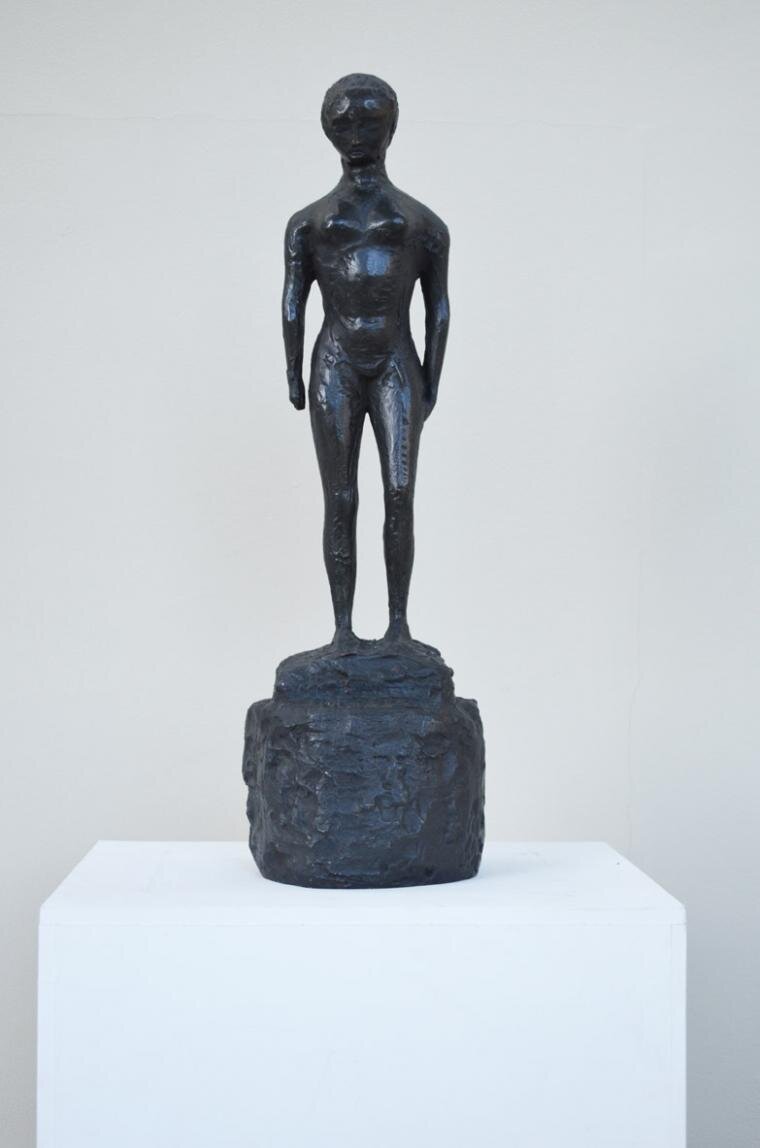Reg Butler
Reg Butler
Study for Circus, 1959
Signed with artist's monogram and editioned 'RB 7/8' (on base)
Bronze
51.4 x 19.1 x 17.5 cm
1ft 7 ⅞ x 7 ½ x 6 ⅞ in.
Throughout Reg Butler's (1913-1981) lifetime he worked as a sculptor, draughtsman, architect and writer. He studied and lectured from 1937-1939 at the Architectural Association, London. During the Second World War, he was a conscientious objector and was exempted from being called up on the agreement that he set up as a blacksmith in West Sussex to fix farm implements. In 1947 he became an assistant to Henry Moore and was appointed a Gregory Fellow in Sculpture at Leeds University from 1950-53 on Moore's recommendation. He also had the position of technical editor for the Architectural Press until 1950.
In 1953 he won the Unknown Political Prisoner competition which brought his work to national attention and he then became one of the best known sculptors for 1950s and 1960s. He had his first solo exhibition at the Hanover Gallery, London and lectured at the Slade School of Fine Art 1951-1980. He was chosen to be exhibited with a group of British sculptors, including Kenneth Armitage, at the 1952 Venice Biennale. In 1955 he held his first exhibition in the USA at the Curt Valentin Gallery, New York which went on to the Museum of Modern Art, New York and Documenta 1, Kassel, Germany. Other highlights of his career included a retrospective exhibition held at J. P. Speed Art Museum, Louisville, Kentucky, in 1963 and an exhibition of painted bronzes at the Pierre Matisse Gallery, New York in 1973. His impressive career was celebrated two years after his death with a retrospective at the Tate, London and in 100 Jahre Kunsthalle Mannheim, Städtische Kunsthalle Mannheim, Mannheim in 2007. Many of his works are held in the collections of the Tate Britain, London and the Museum of Modern Art, New York.
Butler's works were very often based on the recurring motif of the human figure which in his later works were predominantly of women. As with many of his contemporaries, much of his work reflected the 'art of trauma' which characterised much of European art following the Second World War. He noted that he was influenced by Brancusi, Giacometti, Malliol, Picasso and Rodin. He pioneered the use of his own technique of bronze shell casting in his studio in Hertfordshire.
Please contact us for more information on work by Reg butler.

